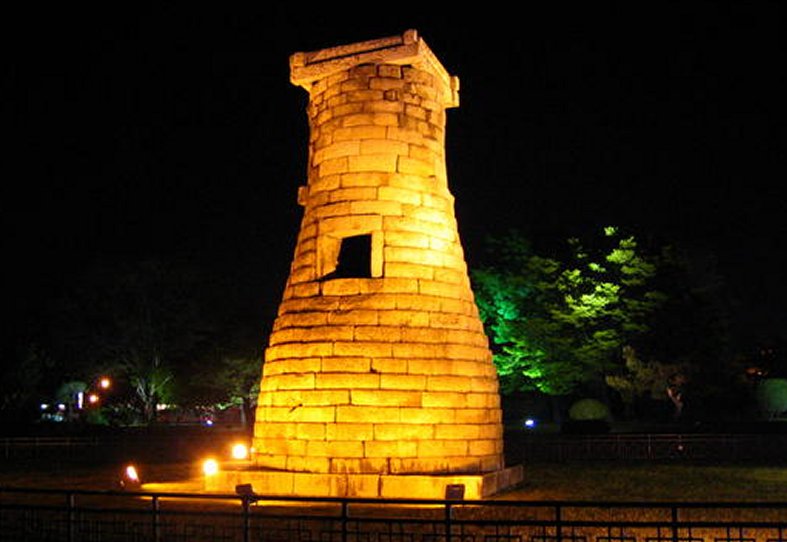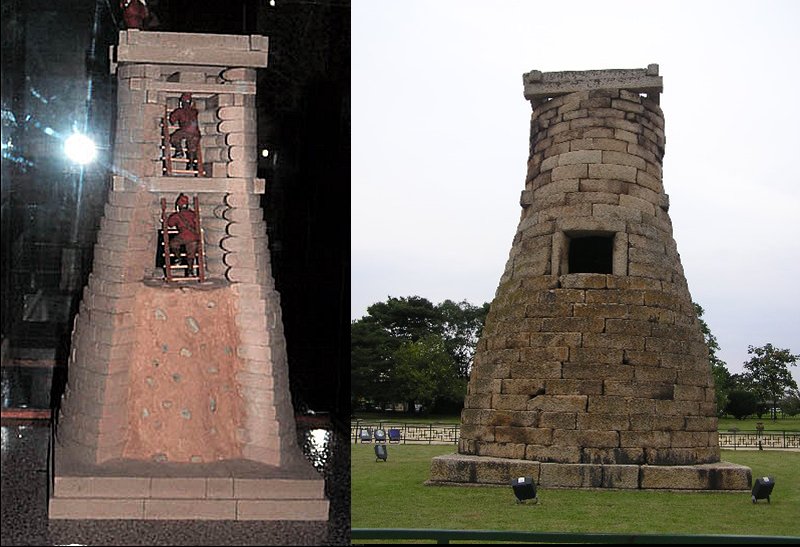A. Sutherland – AncientPages.com – The Cheomseongdae Observatory located in Gyeongju, South Korea originates from the flourishing Silla period. Constructed in 632, the Cheomseongdae (“star-gazing tower” or “star-observing terrace”) is the oldest astronomical observatory in East Asia.

Cheomseongdae Observatory at night. source
It is a stone cylindrical-shaped structure composed of 362 granite blocks that represent the 362 days of the lunar year.
It is a symbol of early astronomy and the Southern observatory of the European astronomers working in Chile is called – Silla.
The structure – located near to the royal tomb of King Naemul of Silla – was built during the reign of Queen Sondok, the 27th ruler of the old Silla Kingdom in 634 AD. Queen Sondok (Seon-deok) was one of the first legitimate female rulers in East Asia’s history.
The observatory has twenty-seven levels of granite organized to resemble brick support the upper layers of stone that form the top platform. The granite stones are all concentrated in a round shape with four sets of parallel bars. So arranged, they form a square-shaped structure at the top. The granite brick construction is similar to the method used at Bunhwangsa temple, which developed from contact with Tang dynasty China.
Constructed in 634, Bunhwangsa (Famous Emperor Temple) is the oldest pagoda dated to the Silla Era. Once, the pagoda had seven or nine stories, but the upper stories have been lost over the years.
The pavilion stone is believed to have been used as a standard of deciding directions, north, south, east, and west.

Left: Model of the interior of Cheomseongdae; source: Right: Cheomseongdae Observatory, source
The ends of the parallel bars stick out several inches from the surface. Today it is not exactly known their purpose, but they might have been a support for a staircase inside the observatory. The twelve rectangular base stones are placed in a square, three on each side.
They represent the four seasons and twelve months of each year. The Vernal Equinox, Autumnal Equinox, Winter Solstice, Summer Solstice, and the 24 solar terms (the astronomical solar year) were determined by the observation of stars.
The purpose of the observatory was to observe the stars in order to forecast the weather.
The twelve tiers of stones to the window entrance and twelve tiers above the window opening also most probably symbolize the twelve months of the year. The observatory is 9.17 meters high and the base stone on each side measures 5.35 meters. Approximately, 4.16 meters up from the bottom, there is a one square meter entrance and a space to hang a ladder under it.
The inside is filled with soil up to the 12th level. The 19th, 20th, 25th, and 26th levels all have long rocks hanging on two areas, shaped as the Chinese letter ‘井’ (jeong). However, they could also represent the twelve symbols of the zodiac.
The Cheomseongdae observatory reflects a Chinese calendar with symbolic bricks. The bricks represent the days of the year, but parts also show the years of Queen Sondok’s reign.
Cheomseongdae has now its original appearance for about 1300 years since its construction in the 7th century. The structure is now slightly tilted to the north-east but the original shape is mostly intact. However, the instruments used for observation and observatory records have not been pᴀssed down, so the exact methods of taking observations are not known today.
Written by – A. Sutherland – AncientPages.com Senior Staff Writer
Copyright © AncientPages.com All rights reserved. This material may not be published, broadcast, rewritten or redistributed in whole or part without the express written permission of AncientPages.com
Expand for references
References:
Asian Historical Architecture
UNESCO – Portal to the Heritage of Astronomy





